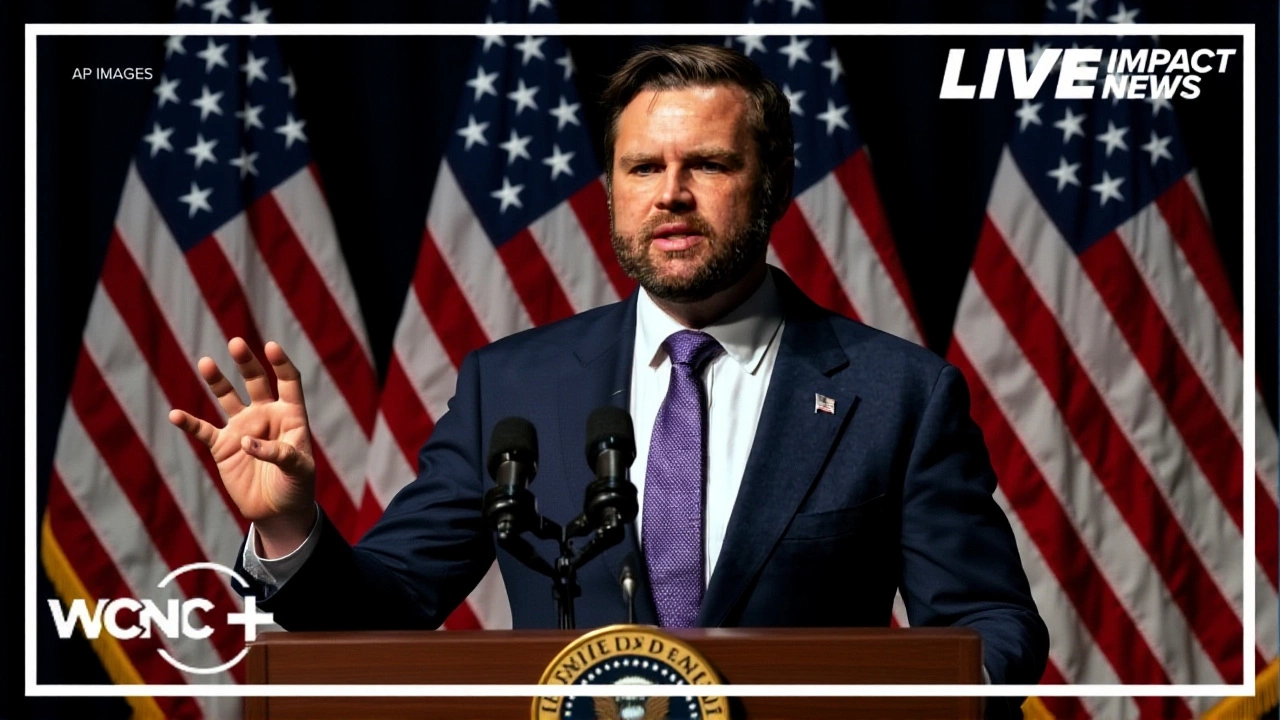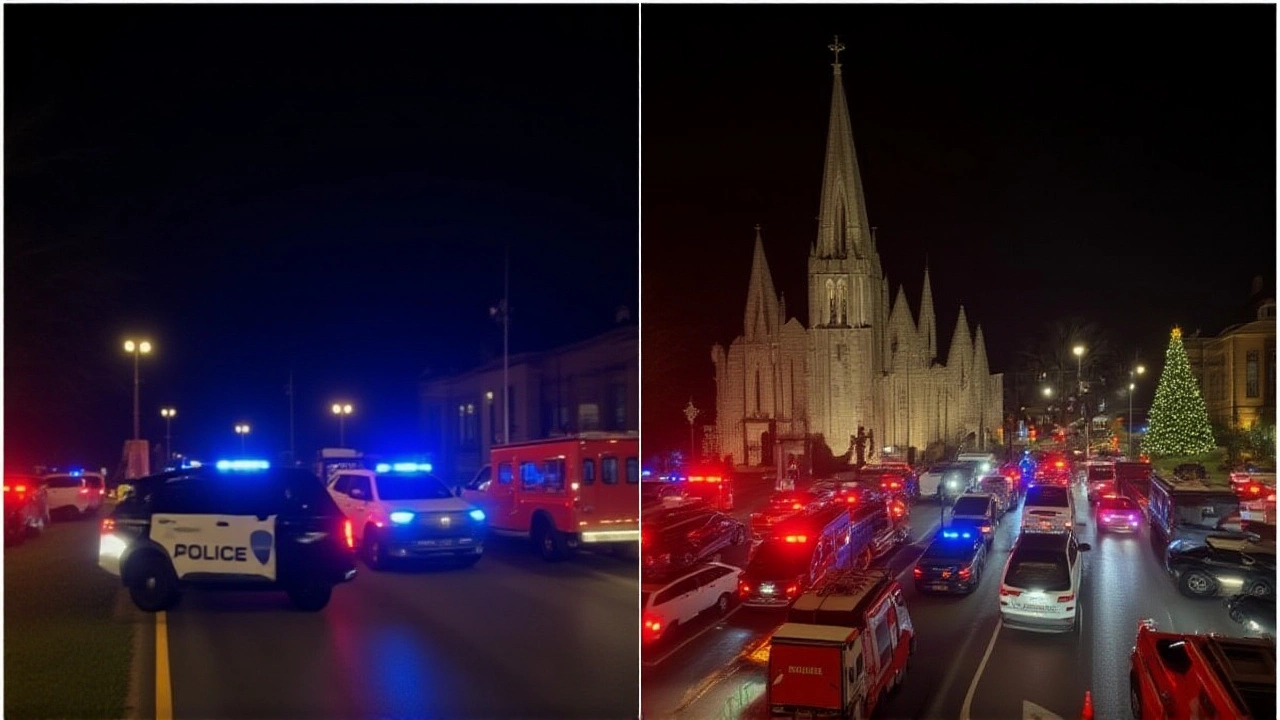When Kamala Harris landed in Charlotte on Saturday, October 12, 2024, she wasn’t just another politician making a photo op. She was stepping into a landscape of mud-slicked streets, collapsed bridges, and homes still without power nine days after Hurricane Helene ripped through the Southeast. The death toll had climbed to 230. In Asheville, residents were boiling river water to drink. In Greenville, families slept in tents beside their ruined homes. And Harris, the Vice President and Democratic presidential nominee, was there — not just to assess the damage, but to remind people they hadn’t been forgotten.
A Dual Mission: Relief and Rally
Her visit that day was a tightrope walk between duty and politics. In the morning, Harris met with survivors in Asheville, sitting at kitchen tables with elderly residents who hadn’t seen a utility crew in days. She listened as one woman, her voice trembling, said, “We’ve got canned peaches, but no way to cook them.” Later, she stood on the stage at East Carolina University’s Dean Smith Center — better known as The Pit — in Greenville, where hundreds cheered as she pledged federal aid would keep flowing. “We want to provide hope for individuals that may still be out there hoping for help,” she told the crowd.This was her 19th trip to North Carolina this campaign season. And it wasn’t accidental. The state, with its shifting electorate and 16 electoral votes, remains a linchpin in November’s election. But Harris’s presence carried weight beyond votes. It signaled that the federal government hadn’t checked out — even as frustration mounted.
The Scale of the Disaster
FEMA had approved just 14,000 assistance applications by October 12, despite over 150,000 households registering for aid. That backlog isn’t bureaucracy for bureaucracy’s sake — it’s people waiting for roof repairs, temporary housing, or cash to replace a refrigerator that floated away. Meanwhile, FEMA had shipped nearly two million ready-to-eat meals and over a million liters of water into the region. Still, in the mountains of Buncombe County, crews were doing search-and-rescue missions into their second week. Roads remained washed out. Cell towers were down. Some communities were still unreachable by vehicle.“Nine days after the storm, many residents here may not have running water for weeks,” reported NBC News’s Antonia Hylton from Asheville. That’s not a guess. That’s a grim reality confirmed by local officials. And it’s why conspiracy theories took root — whispers that the federal response was slow on purpose, that the administration was ignoring rural areas. Harris’s visit was meant to counter that narrative. But trust doesn’t rebuild with speeches. It rebuilds with running water, with restored power, with a check in the mail.

Biden’s Criticism and Trump’s Shadow
President Joe Biden had visited the region just three days earlier, on October 9, touring Asheville by helicopter. “We have to jump start this recovery process,” he said. “People are scared to death. This is urgent.” He made it clear the storm’s cost could reach billions. But his real target was Donald Trump, who’d visited Valdosta, Georgia, days before. “I don’t care what he says about me,” Biden told reporters. “I care what he communicates to the people that are in need. He implies that we’re not doing everything possible. We are. We are.”Trump’s visit, like Harris’s, was both symbolic and strategic. But his tone — often dismissive of federal aid, frequently blaming “the left” for delays — stood in stark contrast to Harris’s message of unity and urgency. The White House saw this as more than political theater. It was a battle over who Americans believed when disaster struck.
What’s Next for North Carolina?
Recovery will take years. The Buncombe County government alone estimates $1.2 billion in public infrastructure damage. The state’s power grid, already fragile, may need $800 million just to harden against future storms. And with winter coming, heating homes without power becomes a life-or-death issue.Meanwhile, FEMA has deployed teams to six states — Florida, Georgia, South Carolina, North Carolina, Tennessee, and Virginia. But the real test isn’t how fast aid arrives. It’s whether it arrives consistently. One woman in Waynesville told a reporter she’d applied for aid three times. Each time, she was told her file was “incomplete.”
The federal response isn’t broken — it’s overwhelmed. And in a state as politically divided as North Carolina, perception becomes reality. If people believe they’re being ignored, they’ll vote accordingly — regardless of the facts.

The Human Cost Behind the Numbers
More than a million people lost power across the Southeast. In some counties, 70% of homes were damaged. Emergency crews found bodies trapped under collapsed garages. One family in Haywood County lost three generations in a single flash flood. These aren’t statistics. They’re names: Evelyn Carter, 82. Javier Mendez, 14. Rosa Lee, 67.Harris’s visit mattered because she didn’t just shake hands. She held a man’s hand as he cried. She asked a teenager if he’d been able to finish his schoolwork. She didn’t say “we’re doing everything.” She said, “We’re still here.”
That’s the difference between optics and accountability.
Frequently Asked Questions
How many people have been approved for FEMA aid in North Carolina as of October 12, 2024?
As of October 12, 2024, FEMA had approved 14,000 individual assistance applications in North Carolina, out of more than 150,000 households that had registered. The gap reflects delays in documentation, damaged records, and the complexity of verifying losses in remote areas where access remains limited.
Why are some communities still without running water nine days after Hurricane Helene?
Washed-out roads, collapsed bridges, and damaged water treatment plants have prevented repair crews from reaching isolated mountain communities. In places like Swain and Madison counties, water lines were buried under debris or ruptured by landslides. Utilities are prioritizing population centers, leaving rural residents to rely on bottled water deliveries that arrive sporadically.
What role does North Carolina play in the 2024 presidential election?
North Carolina is a pivotal battleground with 16 electoral votes, having voted for the Republican candidate in 2020 by less than 1.5%. With a growing urban-rural divide and high voter turnout among young and minority populations, both campaigns are pouring resources into the state. Harris’s 19th visit signals the Democratic effort to mobilize voters in areas hardest hit by the storm.
How does the federal response to Hurricane Helene compare to past disasters like Hurricane Katrina or Ian?
FEMA’s initial deployment — including food, water, and temporary housing — was faster than after Katrina in 2005. But like Hurricane Ian in 2022, the response has struggled with rural access and long-term recovery coordination. Unlike Ian, Helene affected a larger geographic area across multiple states, straining logistics. Experts say the pace of aid approval is slower than after Sandy (2012), partly due to increased bureaucratic scrutiny.
Is there evidence that political motives influenced the timing of Harris’s visits?
Yes — Harris’s visit to Greenville included a campaign rally immediately following her disaster assessment. But so did Biden’s October 9 visit to Asheville, which included a brief speech on economic recovery. In modern politics, disaster response and campaigning are deeply intertwined. The key question isn’t whether politics played a role — it’s whether the aid delivered matched the urgency of the need.
What long-term changes might Hurricane Helene trigger in North Carolina’s infrastructure?
State officials are already pushing for $2.3 billion in infrastructure upgrades, including elevated roads, hardened power lines, and decentralized water systems for mountain communities. The storm exposed how climate change is rewriting the rules of disaster planning. Without federal funding, many of these projects won’t move forward — making the November election a de facto vote on the state’s future resilience.





